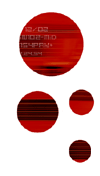

 |
 |
scientific program electroacoustic musics around set theory music analysis tools musicnetwork workshop professional week ircam forum workshops free software for music international multichannel sound forum performing arts and technologies dance and new technologies access to sound heritage thematic evenings demonstration stands artistic program set theory concert music in creation concert cursus concerts opera "one" sound installations open house weekend technologies gallery conferences demonstrations workshop-performances workshops and films ircam laboratories linux install-party concert distribution on internet associated events resonances night at glaz'art émilie simon at la cigale suguru goto reseaunances guided tours of ircam and the multimedia library resonances in pictures resonances 2002 
|
ROSEMARY MOUNTAINTheories market : open for tradingAbstractThe paper stresses the diversity of musical styles, contexts, and intentions within the electroacoustic world, and argues that this diversity, along with the commonalities of the practice, should influence the invention of new analytical tools and modification of existing ones. The paper outlines a multitude of reasons for analysis, types of analysis, disciplines which contribute to analytical methods, and existing and proposed analytical tools. It is noted that certain areas of analysis are receiving particular attention from electroacoustics specialists (such as timbre and texture), whereas other areas (such as macroscopic rhythm) are still underdeveloped in both the acoustic and electroacoustic realms. It is proposed that those involved in electroacoustics are an ideal group to become lobbyists and proponents for more sophisticated analytical tools in general, and for more reflection on the appropriate choice of analysis to be used in a specific context. Identifying appropriate excerpts from the electroacoustic repertoire can help test the validity of the current proposed tools, while identifying common issues from specific electroacoustic, acoustic, and mixed media works can help bridge the artificial divides currently existing in some analytical approaches. |
|||||||||||||||||||||||||||||||
 |
Organization Committee Copyright Ircam-Centre Pompidou 2003 |